The Best Chicken Noodle Soup
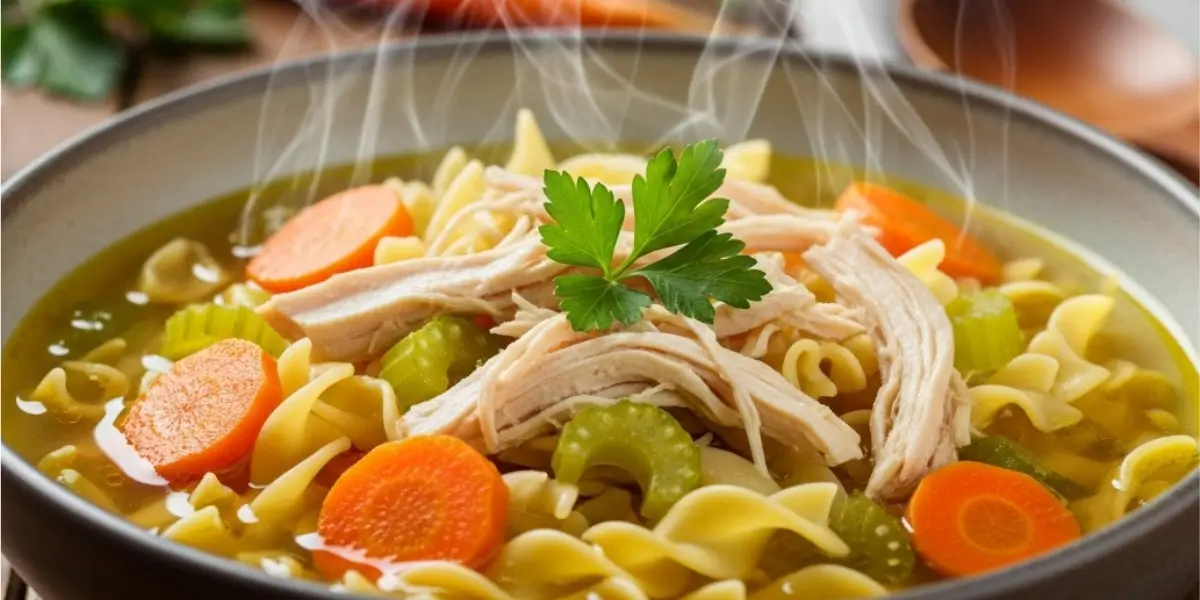
There’s a certain magic that happens when you cradle a warm bowl of chicken noodle soup in your hands. It’s more than a meal; it’s a feeling. Perhaps it’s the steam rising to meet your face on a crisp autumn day, or the memory of being cared for when you were home sick from school. For generations, this simple, humble dish has been the universal language of comfort, a culinary hug that seems to make everything better. But have you ever wondered what transforms a basic pot of chicken noodle soup from a simple recipe into a legendary elixir? It’s not a secret handed down by gourmet chefs, but rather the love and technique you pour into it. This guide is your passport to creating that perfect, soul-soothing bowl of homemade chicken noodle soup that rivals even the most nostalgic childhood memory.
Why Homemade Chicken Noodle Soup is the Ultimate Comfort Food
Before we dive into the recipe, let’s explore why this particular dish holds such a revered place in our hearts and kitchens. Understanding the “why” makes the “how” even more rewarding.
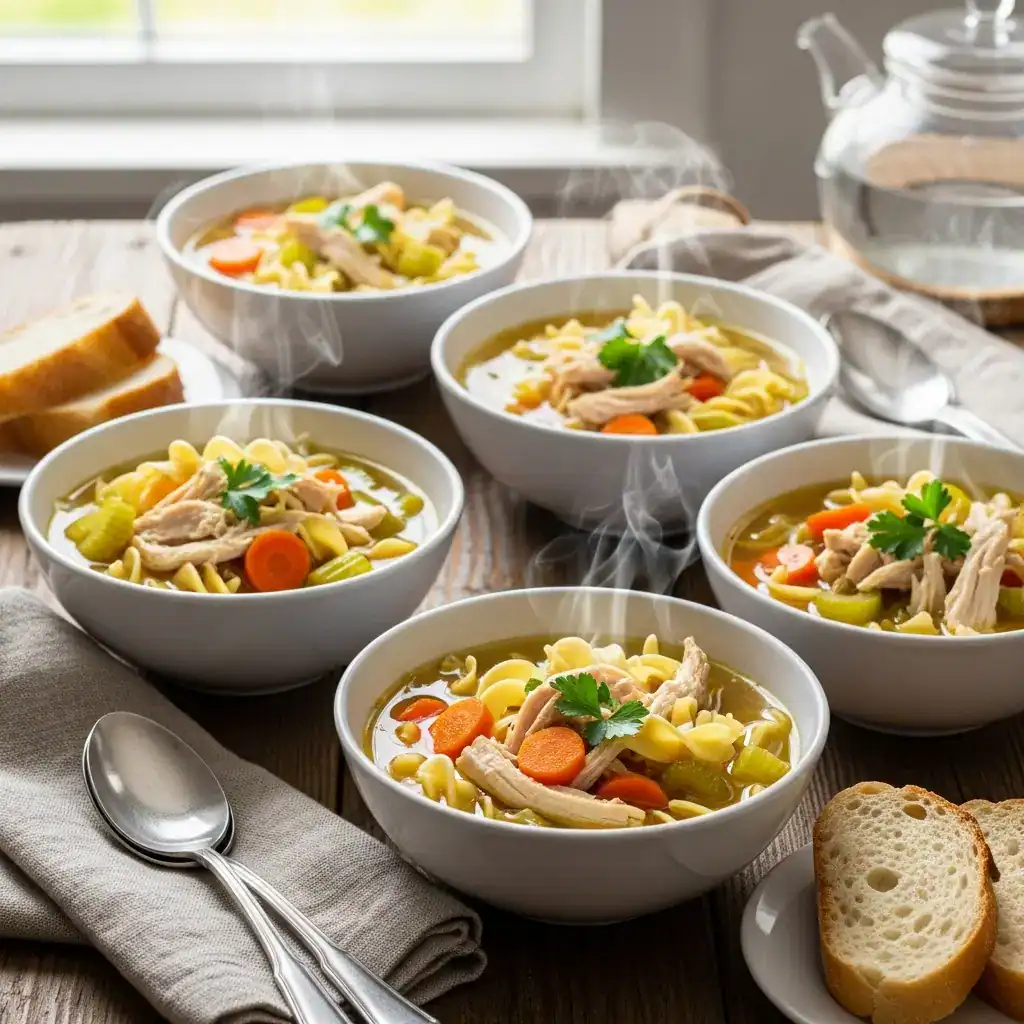
The Science of Comfort and Nostalgia
The connection between chicken noodle soup and comfort isn’t just in our heads; it’s rooted in science and psychology. The warm steam from the soup can help open up sinus passages, providing immediate physical relief. Furthermore, the act of eating a warm, liquid-based meal is inherently soothing to the digestive system. But beyond the physical, there’s a powerful psychological component. For many of us, the aroma of chicken noodle soup simmering on the stove is a powerful trigger for positive memories and feelings of safety and care. This combination of physical warmth and emotional nostalgia creates a powerful feedback loop that genuinely makes us feel better, whether we’re fighting a bug or just a bad day.
Chicken Noodle Soup

A warm and comforting homemade chicken noodle soup made with tender chicken, egg noodles, carrots, celery, and herbs simmered in a flavorful golden broth.
- 1 tablespoon olive oil
- 1 medium onion, chopped
- 2 cloves garlic, minced
- 2 medium carrots, sliced
- 2 celery stalks, sliced
- 8 cups chicken broth
- 2 cups cooked shredded chicken
- 2 cups egg noodles
- 1 teaspoon salt
- ½ teaspoon black pepper
- 1 teaspoon dried thyme
- 1 tablespoon fresh parsley, chopped
Heat olive oil in a large pot over medium heat. Add onion, garlic, carrots, and celery; sauté until softened
Pour in chicken broth and bring to a boil.
Add shredded chicken, salt, pepper, and thyme. Reduce heat and simmer for 20 minutes.
Add egg noodles and cook for 8–10 minutes, until noodles are tender
Stir in fresh parsley and adjust seasoning before serving.
✅ Pros (Positive Notes)
-
Rich, flavorful broth
-
Simple ingredients and easy steps
-
Perfect comfort food for cold days
-
Great for families and meal prep⚠️ Cons (Negative Notes)
-
Requires simmering time for best flavor
-
Noodles can get soft if reheated too long
Nutritional Powerhouse: More Than Just a Cure for Colds
While your grandmother wasn’t wrong about its curative powers, the benefits of a well-made chicken noodle soup extend far beyond placebo. A robust, homemade version is a complete nutritional meal in a bowl.
- Hydration: The broth base helps keep you hydrated, which is crucial when you’re sick or just maintaining overall health.
- Protein: The chicken provides lean, high-quality protein essential for muscle repair and immune function.
- Vitamins & Minerals: Vegetables like carrots, celery, and onions contribute vital vitamins like A and C, along with antioxidants.
- Electrolytes: The sodium and potassium in the broth act as electrolytes, helping your body maintain its fluid balance.
When you make your chicken noodle soup from scratch, you control the sodium and quality of ingredients, making it a genuinely healthy choice.
Crafting the Perfect Bowl: Your Step-by-Step Chicken Noodle Soup Recipe
This isn’t just another chicken noodle soup recipe; it’s a blueprint for building layers of flavor. Forget the canned stuff this method will redefine what chicken noodle soup can be.
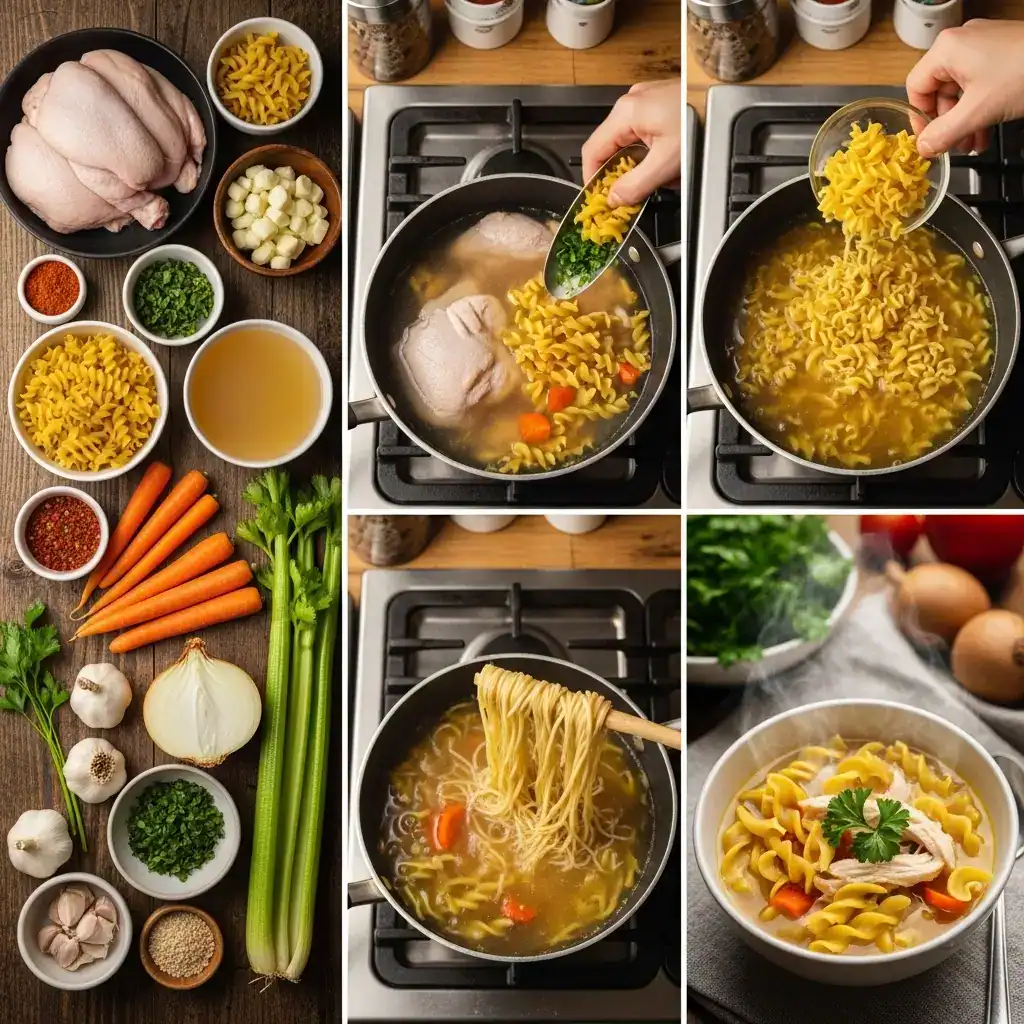
The Secret to a Rich, Flavorful Broth
The soul of any great chicken noodle soup is its broth. A watery, bland broth is the most common pitfall. Here’s how to avoid it:
- Start with a Whole Chicken or Bone-In Pieces: Using bones is non-negotiable. Bones, cartilage, and skin release collagen and gelatin as they simmer, giving the broth body, richness, and a mouthfeel that water and bouillon cubes can never replicate.
- Build a Flavor Base (Soffritto): Before adding your water, sauté your classic aromatic vegetables diced onion, carrots, and celery in the pot with a little oil or chicken fat until they soften and become fragrant. This foundational step adds immense depth to your chicken noodle soup.
- Simmer, Don’t Boil: A gentle, low simmer for at least 60-90 minutes is key. A rolling boil will make the broth cloudy and can make the chicken tough.
Here’s a breakdown of the core ingredients and their roles:
Classic Chicken Noodle Soup Ingredients & Their Roles
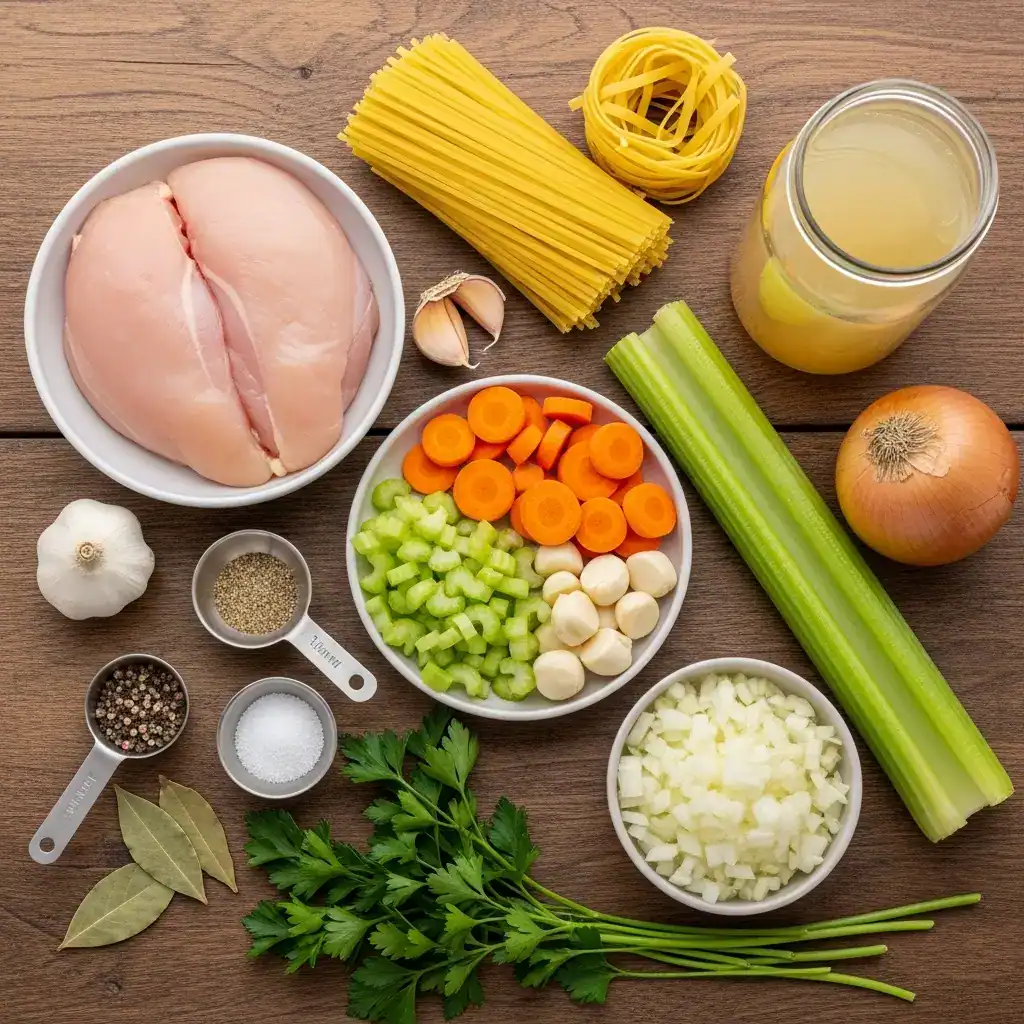
| Ingredient | Role in the Soup |
|---|---|
| Chicken (Bone-in) | Provides protein and creates a rich, gelatinous broth. |
| Mirepoix (Onion, Carrot, Celery) | The aromatic base that adds sweetness, depth, and classic flavor. |
| Garlic & Herbs (Thyme, Bay Leaf) | Adds complexity and aromatic notes that elevate the soup. |
| Egg Noodles | The classic starch that provides comfort and substance. |
| Salt & Pepper | Essential for seasoning and enhancing all the other flavors. |
Choosing Your Noodles and Vegetables
The beauty of this chicken noodle soup is its flexibility. While the classic vegetable trio is perfect, don’t be afraid to add others like diced parsnips, leeks, or even a handful of spinach at the end.
When it comes to noodles, the choice is yours, but timing is everything.
Noodle Options for Your Chicken Noodle Soup
| Noodle Type | Best For | Cooking Tip |
|---|---|---|
| Wide Egg Noodles | The classic, hearty choice. | Add them for the last 10 minutes of cooking to prevent mush. |
| Ditalini or Orzo | A fun, bite-sized alternative. | Cook separately and add to each bowl to keep the broth clear. |
| Whole Wheat Noodles | A healthier, fiber-rich option. | May require a slightly longer cooking time; check package directions. |
| Gluten-Free Noodles | For dietary restrictions. | Often best cooked separately as they can break down and cloud the broth. |
Pro Tips and Common Mistakes for Your Chicken Noodle Soup
You have the recipe. Now, let’s master it. These small tweaks are what separate a good chicken noodle soup from a great one.
How to Prevent Soggy Noodles
This is the #1 complaint about leftover chicken noodle soup. Noodles continue to absorb liquid as they sit, turning your beautiful soup into a starchy stew. The solution is simple: Cook your noodles separately. Boil them in a separate pot of salted water until al dente, drain, and then add them to individual bowls before ladling the hot soup over the top. When storing leftovers, keep the soup broth and noodles in separate containers. This ensures every bowl you eat has perfectly textured noodles.
Customizing Your Soup: Global Twists and Dietary Tweaks
Your basic chicken noodle soup is a fantastic canvas for creativity.
- For a Creamy Version: Stir in a 1/2 cup of heavy cream or full-fat coconut milk at the end for a rich, creamy chicken noodle soup.
- Add a Spicy Kick: A dash of hot sauce, a spoonful of sriracha, or some diced jalapeños can add a welcome warmth.
- Go Global:
- Italian: Add diced tomatoes, cannellini beans, and rosemary.
- Mexican: Use lime juice, cilantro, and add some corn and chopped green chiles.
- Greek: Add a squeeze of lemon juice and a big handful of fresh dill at the end.
- Dietary Tweaks: For a low-carb option, spiralized zucchini or zucchini noodles (“zoodles”) are a fantastic substitute. Add them raw to the bowl and let the hot soup cook them slightly.
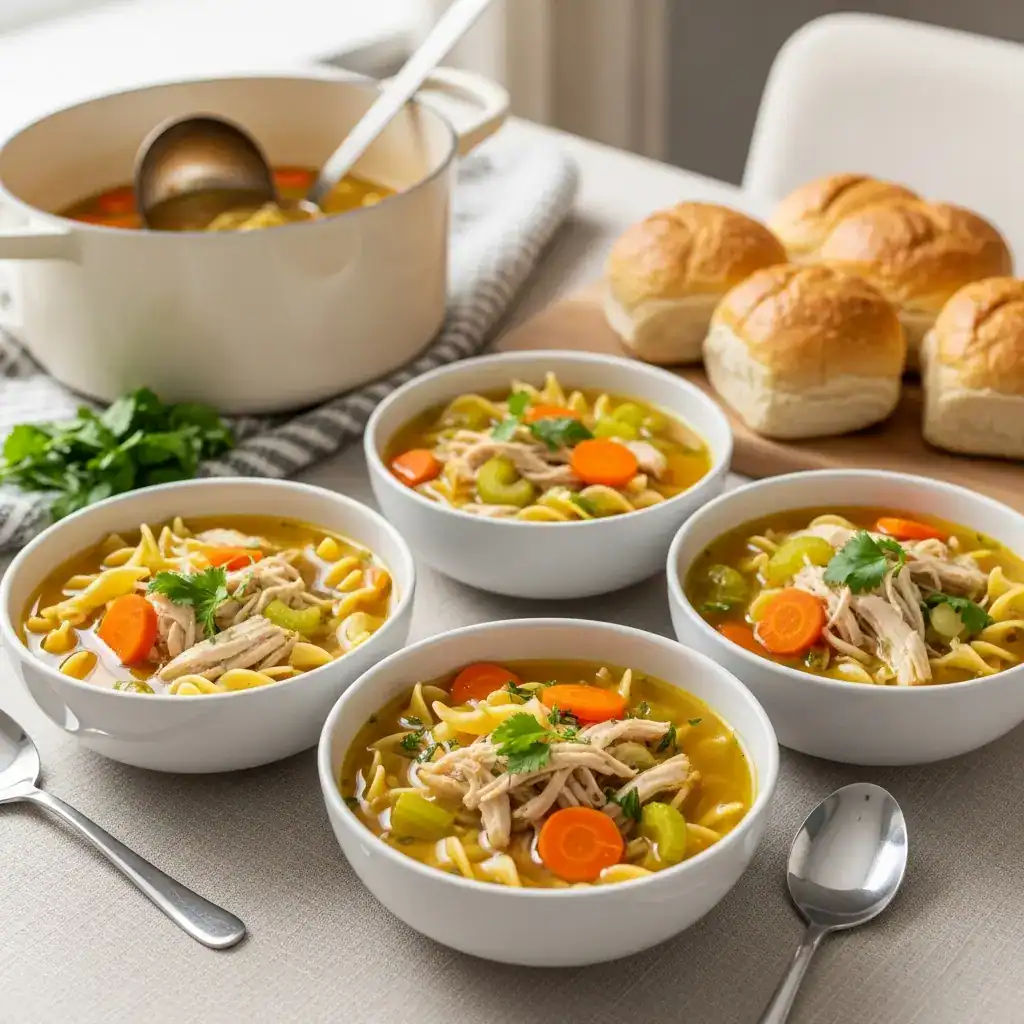
Conclusion
A truly great chicken noodle soup is a testament to the power of simple, wholesome ingredients treated with care. It’s a dish that nourishes the body, comforts the soul, and fills your home with an aroma that feels like a warm embrace. By taking the time to build a flavorful broth, carefully selecting your components, and using pro tips like cooking noodles separately, you elevate this classic from a mere meal to an experience. So, the next time you feel a chill in the air or a need for a little comfort, you know exactly what to do.
Frequently Asked Questions (FAQ) About Chicken Noodle Soup
Q1: How long can I store leftover chicken noodle soup?
A: Your homemade chicken noodle soup will last for 3-4 days in a sealed container in the refrigerator. For best results, store the broth and noodles separately to maintain the perfect noodle texture. You can also freeze the broth (without noodles) for up to 3 months.
Q2: What is the best way to reheat chicken noodle soup?
A: The best way to reheat your chicken noodle soup is gently on the stovetop over medium heat until it simmers. If you stored noodles in the soup, they will have absorbed much of the broth, so you may need to add a splash of water or additional broth when reheating. Avoid a rolling boil to prevent the chicken from becoming tough.
Q3: Can I make a good chicken noodle soup in a slow cooker or Instant Pot?
A: Absolutely! Both appliances are excellent for making chicken noodle soup. A slow cooker allows for a long, slow simmer that develops deep flavor, while an Instant Pot can produce a rich broth and tender chicken in a fraction of the time. For both methods, it’s still recommended to add the noodles separately at the end to avoid overcooking.
We’d love to hear from you! What’s your secret ingredient for the perfect chicken noodle soup? Share your tips and family traditions in the comments below.
Chicken Noodle Soup Reviews
See what our community thinks about our classic homemade chicken noodle soup recipe
Classic Homemade Chicken Noodle Soup
A comforting bowl of rich broth, tender chicken, and hearty vegetables
Followed this recipe exactly for my sick daughter and it was absolute perfection! The broth was so rich and flavorful – nothing like the canned versions. The tip about cooking noodles separately was genius. The soup held up beautifully for days without getting mushy.
Really delicious and comforting soup! The flavor was outstanding, though I found the cooking time was closer to 2.5 hours total for me. I used bone-in thighs instead of a whole chicken, which made the process easier.

